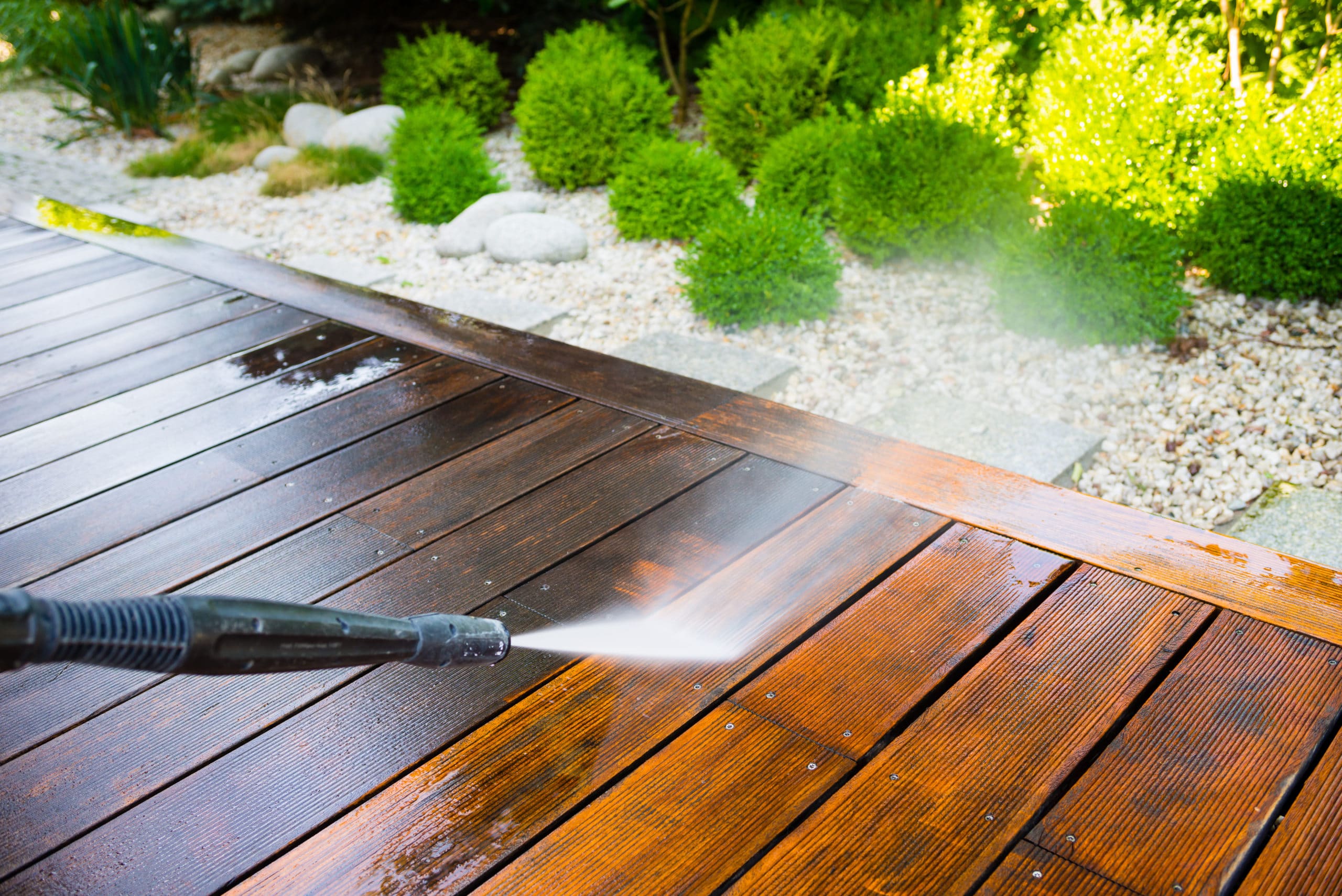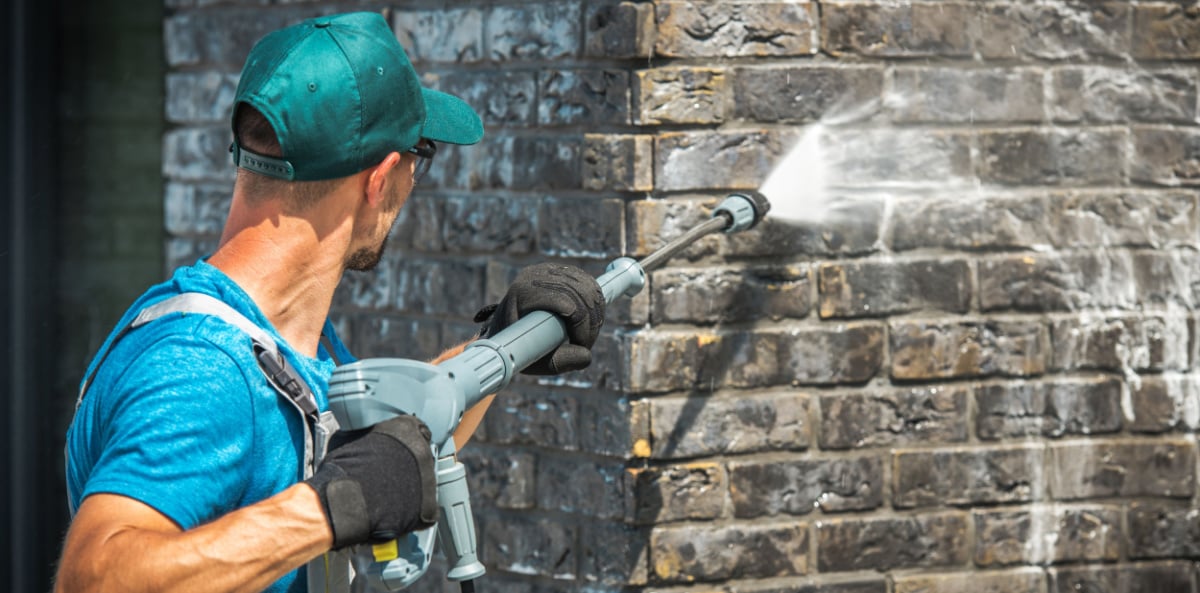Revitalize Your Home: The Ultimate Overview to Pressure Washing
Pressure cleaning is a vital device for homeowners aiming to restore the aesthetic allure and long life of their residential or commercial properties. To navigate these complexities and accomplish ideal outcomes, it is vital to discover the essential elements of stress washing, including useful suggestions on dealing with common stains and ensuring safety and security throughout the procedure.
Recognizing Pressure Washing
Pressure washing is a powerful cleansing technique that utilizes high-pressure water spray to eliminate dust, crud, mold and mildew, and various other impurities from numerous surface areas. This method is particularly effective on hard surfaces like driveways, walkways, decks, and exterior siding, where traditional cleaning approaches may fail. By using customized tools that generates high-pressure streams of water, stress cleaning can pass through deeply right into surfaces, efficiently removing and getting rid of persistent particles.
The process is not just reliable however also eco-friendly, as it often depends exclusively on water, reducing the demand for extreme chemical cleaners. In addition, pressure washing can improve the visual charm of residential properties, maintaining their value and prolonging the lifespan of surface areas by preventing wear and tear triggered by impurities.

Picking the Right Tools
Picking the suitable equipment is crucial for achieving ideal outcomes in stress cleaning. The initial decision involves picking between electric and gas pressure washers. Electric designs are normally lighter, quieter, and ideal for domestic tasks like cleansing patios or vehicles. Gas devices, on the other hand, offer higher pressure and circulation prices, making them optimal for larger work such as cleaning driveways or siding.
Following, consider the pressure ranking, measured in pounds per square inch (PSI) For light-duty tasks, a pressure washing machine with 1,300 to 1,600 PSI is enough, while medium-duty tasks normally need 1,600 to 2,500 PSI. Durable jobs might demand makers going beyond 2,500 PSI.
In addition, the flow rate, gauged in gallons per minute (GPM), influences cleansing effectiveness (Pressure Washing Lockhart). A greater GPM permits for quicker cleaning but might need extra effective tools
Techniques for Efficient Cleansing

The strategy of overlapping strokes is vital for also coverage. Furthermore, keeping a regular range from the surface, normally 12 to 18 inches, enables for reliable application without causing injury.
Utilizing the proper nozzle is additionally necessary. A wide-angle nozzle is excellent for larger locations, while a narrow nozzle can target stubborn dust or gunk. Furthermore, utilizing a sweeping movement instead of a fixed spray assists to avoid concentrated areas of pressure, which could bring about surface damages.

Taking On Common Stains
When it pertains to maintaining the look of exterior surface areas, dealing with typical discolorations properly is vital for lengthening their life-span and boosting visual charm. Different surface areas, including plastic, timber, and concrete, can build up stains from natural materials, oils, and toxic wastes, necessitating wikipedia reference a targeted technique.
For oil stains, a mix of degreasers and stress washing can yield excellent results. Use the degreaser to the discolored location, permitting it to permeate prior to using a pressure washer to remove the residue. Organic spots, such as mildew or algae, typically call for an option having bleach or a devoted mold eliminator, complied with by pressure cleaning to bring back the surface area's original look.
Corrosion stains, normally discovered on metal surface areas, may require customized rust cleaners. Apply the item and scrub the area before stress washing to get rid of any sticking around discoloration. It's important to examine any type of cleaning option on a small, low-profile area initially to stay clear of damages.
Security Tips and Finest Practices
Guaranteeing safety while stress cleaning is paramount, as the high-pressure water can pose significant risks otherwise managed correctly. To secure on your own and others, always put on ideal personal safety tools (PPE), including security goggles, handwear covers, and tough footwear. This gear will protect you from flying particles and the possibility for injury.
Prior to beginning, evaluate the stress washer for any type of leakages or harmed components. Acquaint yourself with the devices's manual to understand its procedure and security features. In addition, guarantee the location you are operating in is totally free of barriers which any electrical connections are risk-free from water direct exposure.
When running the stress washing machine, preserve a safe distance from surfaces and stay clear of intending the nozzle at people, family pets, or breakable things. Make use of the appropriate nozzle for the job, as various nozzles produce varying spray patterns and stress levels. Lastly, be conscious of your environments: safe loosened products, expect electrical lines, and avoid functioning in damp conditions that may cause slides or drops.
Conclusion
In final thought, pressure cleaning serves as an essential device for home owners seeking to boost residential property appearances and longevity. By recognizing the complexities of tools selection, efficient cleaning methods, and common discolor removal, the capacity for rejuvenating one's home comes to be noticeable.
Pressure washing explanation is an effective cleaning method that uses high-pressure water spray to eliminate dirt, gunk, mold and mildew, and other impurities from numerous surface areas. By using customized tools that creates high-pressure streams of water, stress cleaning can pass through deeply right into surface areas, properly displacing and washing away persistent debris.
Nonetheless, it is important to comprehend that pressure washing calls for a particular level of skill and expertise to avoid destructive surface areas. Softer materials like timber or repainted surfaces require a reduced stress setting to protect against damage, whereas concrete or block surface areas can hold up against higher pressure levels.
Organic spots, such as mold or algae, usually need an option consisting my explanation of bleach or a specialized mold and mildew cleaner, adhered to by pressure washing to recover the surface's original look. - Pressure Washing Lockhart